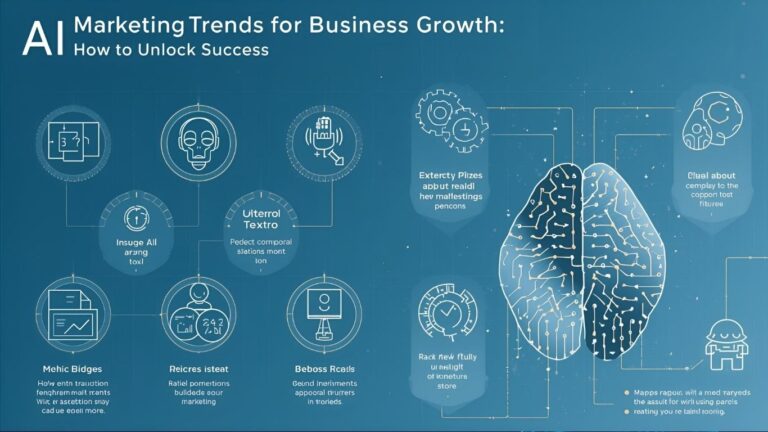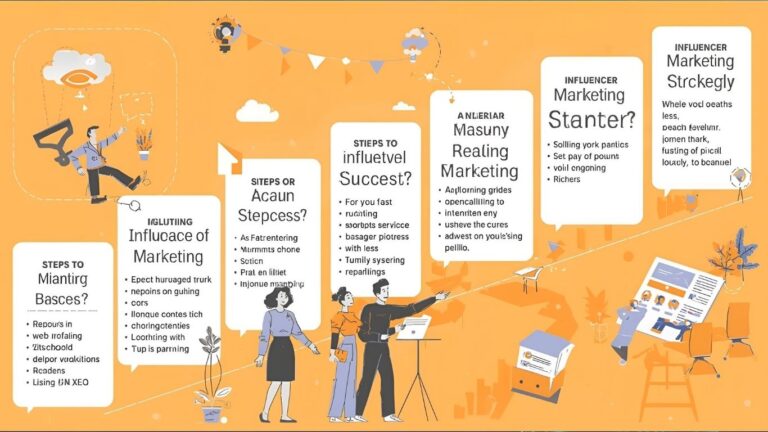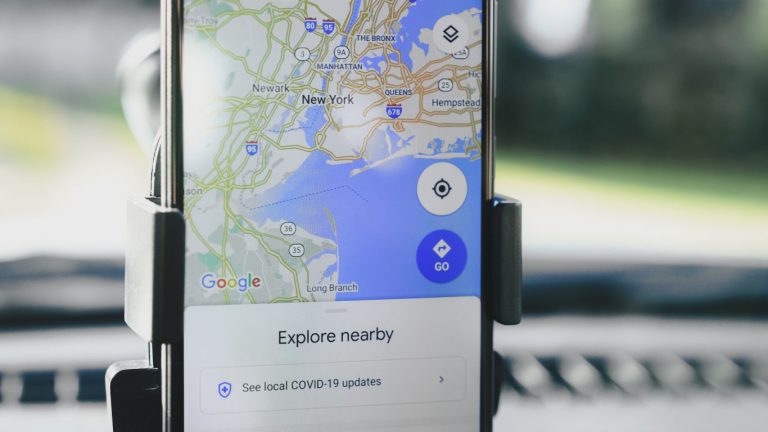Master Responsive Web Design Best Practices: The Ultimate Guide for Every Device
Responsive Web Design Best Practices: How to Create a Perfect Site for Any Device
In the modern digital world, having a responsive web design is no longer a luxury—it’s a necessity. Responsive web design ensures that your website adapts seamlessly to every screen size, whether it’s a large desktop, a medium-sized tablet, or a small smartphone. But how do you ensure your website looks perfect across all devices? Let’s explore the best practices to help you design a site that offers a smooth, engaging experience for all users, no matter what device they’re using.
What is Responsive Web Design?
Responsive web design is a method of designing websites so that they automatically adjust to the screen size of the device being used. It allows your website to look good on desktops, laptops, tablets, and smartphones without the need for separate designs or versions. Essentially, it provides a consistent and optimized experience for your audience—whether they’re browsing from a mobile phone while commuting or viewing your site from a larger desktop screen at home.
The key principle behind responsive design is fluid grids, which use percentages rather than fixed sizes, ensuring the layout scales smoothly according to the screen’s size. This means no more squinting or pinching to zoom in on text or images!
Why Is Responsive Web Design Important?
Imagine visiting a website on your phone, only to find that the layout is all jumbled, the text is too small to read, and you have to scroll horizontally to see the entire page. Frustrating, right? Well, that’s the experience users may have if your website isn’t responsive. Here’s why responsive web design is crucial for your site:
1. User Experience
A good user experience (UX) is vital for the success of any website. If visitors are struggling to navigate your site because it doesn’t adapt to their device, they’re likely to leave. In fact, research shows that users are less likely to return to a website that offers a poor mobile experience. A responsive design, on the other hand, ensures that your content is always easy to read and navigate, no matter what device the user is on.
2. SEO Benefits
Search engines, like Google, have placed increasing importance on mobile-friendly websites. In 2015, Google officially announced that mobile-friendly websites would rank higher in search results, especially on mobile devices. So, if your site isn’t responsive, it’s likely that you’re missing out on higher rankings and more traffic. Responsive design helps you maintain a competitive edge by improving your SEO performance.
3. Cost-Effectiveness
Responsive web design can save you time and money in the long run. Rather than designing separate versions of your website for mobile and desktop, responsive design allows you to create one website that works on all devices. This is particularly helpful for businesses that want to maintain consistency and minimize maintenance costs.
The Core Principles of Responsive Design
To truly master responsive web design, you need to understand the core principles that make it work. These principles are the foundation of creating a responsive website that adapts perfectly to different screen sizes.
1. Fluid Grid Layouts
One of the most important concepts in responsive web design is fluid grids. A fluid grid layout uses percentages rather than fixed sizes to create flexible, scalable designs. This allows your site to adjust to any screen size without compromising the user experience. For example, instead of setting an element to a fixed width of 500px, you could set it to 50% of the container’s width. This ensures the element resizes proportionally on different screens.
2. Flexible Images
Images can be tricky when it comes to responsive design, but there are ways to ensure they display correctly on all devices. Responsive images are images that scale depending on the device’s screen size. By using the CSS max-width property, you can make sure that images never exceed the size of their container and resize appropriately on smaller screens. This prevents images from being too large on mobile devices or too small on larger screens.
3. Media Queries
Media queries are CSS techniques that allow you to apply different styles depending on the device’s characteristics, such as the screen size, orientation, and resolution. With media queries, you can define custom styles for tablets, smartphones, and desktops. This means you can have a layout that looks great on both large and small screens, with no need for separate versions of your site.
Mobile-First Design Approach
In today’s mobile-driven world, designing your website with a mobile-first approach is essential. Mobile-first design means that you prioritize the mobile version of your site first and then scale it up for larger screens. This approach ensures that your website is optimized for mobile users, who make up a significant portion of internet traffic.
When you design for mobile first, you’re forced to focus on simplicity and functionality. You’re not concerned with overwhelming users with too much content or clutter. Instead, you create a clean, easy-to-navigate design that prioritizes key information.
Once you have the mobile version in place, you can then enhance the design for tablets and desktops, adding more elements and features as needed. This ensures that your mobile users have the best experience possible, while still offering a great experience for users on larger screens.
Essential Tools for Responsive Web Design
There are plenty of tools and frameworks available to help make the process of designing a responsive website easier. Here are some of the most popular tools used by web designers to create responsive sites:
1. Bootstrap
Bootstrap is one of the most widely used front-end frameworks for building responsive websites. It comes with a grid system that makes it easy to create flexible layouts, as well as built-in styles for typography, forms, buttons, and other components.
2. Foundation
Similar to Bootstrap, Foundation is another popular front-end framework that helps web designers build responsive websites. It offers a variety of tools, including a mobile-first grid system and responsive design templates, that make it easier to create a site that works well on all devices.
3. Figma and Adobe XD
When it comes to designing responsive websites, Figma and Adobe XD are two of the most popular design tools. These tools allow designers to create high-fidelity prototypes that can be tested across different screen sizes. They also offer collaborative features, allowing multiple team members to work on the design at the same time.
Designing for Desktop, Tablet, and Mobile
Now that you know the core principles of responsive design, it’s time to dive into how to design your site for different devices. Here’s a breakdown of how to optimize your website for desktops, tablets, and mobile devices:
Desktop Design Best Practices
Large, clear images: Desktops offer plenty of space, so you can use larger images and more detailed content.
Multiple columns: Desktops allow you to use multiple columns, which makes it easier to display more content on a single page.
More complex navigation: With more screen real estate, you can use complex navigation menus, including drop-downs and sidebars.
Optimizing for Tablets
Simpler navigation: Tablets are smaller than desktops but larger than phones, so you should simplify the navigation to make it more touch-friendly.
Adjust font sizes: Make sure the text is large enough to be easily readable on tablet screens.
Consider landscape orientation: Many users hold tablets in landscape mode, so make sure your design works well in both portrait and landscape orientations.
Mobile Design Tips
Prioritize simplicity: On mobile, less is more. Focus on essential content and remove any unnecessary elements that could clutter the screen.
Touch-friendly buttons: Mobile users interact with their devices via touch, so ensure that buttons and links are large enough to be tapped easily.
Optimize loading times: Mobile users are often on the go, so it’s crucial to make sure your site loads quickly on mobile devices.
SEO Best Practices for Responsive Websites
If you’re building a responsive website, SEO should be at the forefront of your design process. Here are some SEO best practices for responsive web design:
1. Mobile-Friendly Websites Rank Higher
Google has made it clear that mobile-friendly websites rank higher in search results, especially on mobile devices. A responsive design ensures that your site is mobile-friendly, improving your chances of ranking higher on search engine results pages (SERPs).
2. Use Structured Data
Structured data is a way of labeling and organizing your content so that search engines can understand it better. By adding structured data (also known as schema markup) to your website, you can help search engines display rich snippets and improve your visibility in search results.
3. Optimize Core Web Vitals
Google’s Core Web Vitals are a set of metrics that measure the performance and user experience of a website. By optimizing these metrics (such as loading time, interactivity, and visual stability), you can improve your chances of ranking well in search results.
Conclusion
Responsive web design is no longer optional—it’s an essential part of creating an optimal user experience in today’s digital world. By following the best practices outlined above, you can ensure that your website adapts seamlessly to all devices, offering a smooth, engaging experience for your users. Whether you’re a beginner or a seasoned designer, implementing responsive web design will help you stay ahead of the competition and build a website that looks great on every screen. Ready to get started? Let’s make your website the best it can be!
5-15 Bullet-Point Summary:
- Responsive Web Design ensures that websites adapt to different screen sizes (desktop, tablet, mobile).
- The core principles include fluid grids, flexible images, and media queries.
- Mobile-first design prioritizes mobile users and scales up for larger screens.
- SEO Benefits: Mobile-friendly sites rank better in search results.
- User Experience: A responsive site offers a smooth, engaging experience for users, reducing bounce rates.
- Cost-Effective: One design for all devices reduces time and maintenance costs.
- Popular Tools: Bootstrap, Foundation, Figma, and Adobe XD help in creating responsive websites.
- Desktop Design: Use large images, multiple columns, and complex navigation.
- Tablet Design: Focus on touch-friendly features, simplified navigation, and adaptable layouts.
- Mobile Design: Prioritize simplicity, fast loading times, and touch-friendly buttons.
- Structured Data (Schema Markup) helps improve SEO by enhancing search engine understanding of content.
- Core Web Vitals: Optimizing these metrics boosts SEO and user experience.
- Responsive design is essential for staying competitive in the digital world.
- Responsive Design Saves Money by avoiding the need for separate mobile and desktop versions of a site.
- Websites should be optimized for speed to improve user retention and SEO rankings.
FAQs on Responsive Web Design
What is responsive web design?
Responsive web design ensures that your website automatically adjusts its layout, images, and content according to the device being used (mobile, tablet, desktop). It creates a consistent experience across all screen sizes.
Why is responsive web design important?
It’s crucial because it enhances user experience, improves SEO rankings, and ensures that your site functions properly on all devices, which leads to higher user retention and engagement.
How does responsive design improve SEO?
Search engines like Google prioritize mobile-friendly websites. A responsive site improves load times and user experience, both of which are key factors in SEO ranking.
What is mobile-first design?
Mobile-first design focuses on creating the mobile version of a website first, then scaling it for larger devices like tablets and desktops. This approach ensures that the site works perfectly on mobile devices, which are now the primary way people access the internet.
Do I need separate websites for mobile and desktop?
No, with responsive web design, you only need one website. It adjusts automatically to different screen sizes, eliminating the need for separate mobile and desktop versions.
What tools can I use to create a responsive website?
Popular tools include Bootstrap, Foundation, and Figma. These frameworks and design tools help create responsive layouts quickly and efficiently.
How does responsive design affect website loading speed?
A well-designed responsive website can actually improve loading times by ensuring that images and scripts are optimized for each device, reducing unnecessary content for mobile users.
How do media queries work in responsive design?
Media queries allow you to apply different CSS styles based on the device’s screen size, resolution, or orientation. They ensure that your website looks great on both small and large screens.
Can I use responsive design for e-commerce websites?
Yes, responsive design is especially important for e-commerce websites. It ensures that your online store is accessible and easy to use, whether customers are browsing on a desktop or shopping on their smartphones.
What are fluid grid layouts?
Fluid grid layouts use relative units (like percentages) instead of fixed units (like pixels) to define the layout of a webpage. This allows the layout to adjust dynamically based on the screen size.
How do I optimize images for responsive web design?
Use CSS properties like max-width to ensure images don’t overflow their containers. Additionally, consider compressing images to reduce load times on mobile devices.
What is the difference between adaptive and responsive design?
Adaptive design creates different layouts for different devices, while responsive design uses a single flexible layout that adapts to any device. Responsive design is generally more efficient and easier to maintain.
What should I prioritize in mobile web design?
Focus on simplicity. Mobile users appreciate quick loading times, easy navigation, and a clutter-free layout. Prioritize essential content and ensure buttons are touch-friendly.
How do I test if my website is responsive?
You can test your website using browser tools like Chrome’s DevTools or by manually resizing your browser window. You can also use online tools like BrowserStack to test on various devices.
Can I use a pre-built template for a responsive website?
Yes, many website builders and CMS platforms offer responsive templates that you can customize. However, ensure that the template suits your business needs and branding.
Blog Recommendation:
For more valuable insights into web design and development, check out Get Rizwan’s Blog. It’s packed with helpful tips and expert advice on web development, digital marketing, and more!
Explore These Valuable Resources
To help you master responsive web design and stay ahead in the ever-evolving digital world, here are some carefully selected external resources. These will expand your understanding, deepen your knowledge, and guide you toward best practices.
Google Web Fundamentals
Discover Google’s essential tips on building responsive websites. It provides comprehensive insights into mobile-first approaches, layout principles, and optimizing your design for different devices.
W3C’s Responsive Web Design
The World Wide Web Consortium (W3C) provides an in-depth explanation of CSS Media Queries, a crucial tool in responsive web design. Learn how to use them for different screen sizes and resolutions.
Smashing Magazine: Responsive Design Tips
Smashing Magazine offers a detailed article on the guidelines of responsive web design, covering everything from basic principles to advanced techniques for a mobile-first approach.
Mozilla Developer Network (MDN) on Media Queries
For a clear understanding of media queries, check out this in-depth guide from MDN. It covers syntax, best practices, and practical examples of how to use media queries for different devices.
A List Apart: Responsive Web Design
This classic article by Ethan Marcotte—who coined the term “responsive web design”—offers valuable insights into how responsive design is changing the web and why it’s essential for modern development.
Bootstrap Official Documentation
Bootstrap, one of the most popular front-end frameworks, helps web developers create responsive websites quickly. The official documentation explains how to use Bootstrap’s grid system and responsive utilities.
HubSpot: The Ultimate Guide to Responsive Web Design
HubSpot’s guide breaks down the importance of responsive design and offers actionable advice on building responsive websites that improve user experience and SEO performance.
CSS-Tricks: Responsive Web Design Basics
CSS-Tricks provides a collection of useful media queries for various devices, making it easier for developers to implement responsive design. This resource is great for practical, everyday web development.
Adobe XD: Designing for Multiple Devices
Adobe XD’s guide teaches you how to design for multiple devices using responsive techniques. It’s a fantastic tool for web designers looking to create responsive layouts in the design phase.
Moz Blog: SEO for Responsive Web Design
Learn how responsive web design directly impacts your SEO rankings. Moz’s article discusses why Google favors mobile-friendly websites and how responsive design can improve your website’s visibility on search engines.
These resources are carefully selected to offer a deeper understanding of responsive web design, ensuring that you’re equipped with the knowledge to build optimal, user-friendly websites. By exploring these authoritative links, you’ll gain insight into the most up-to-date tools, practices, and strategies in web design.







